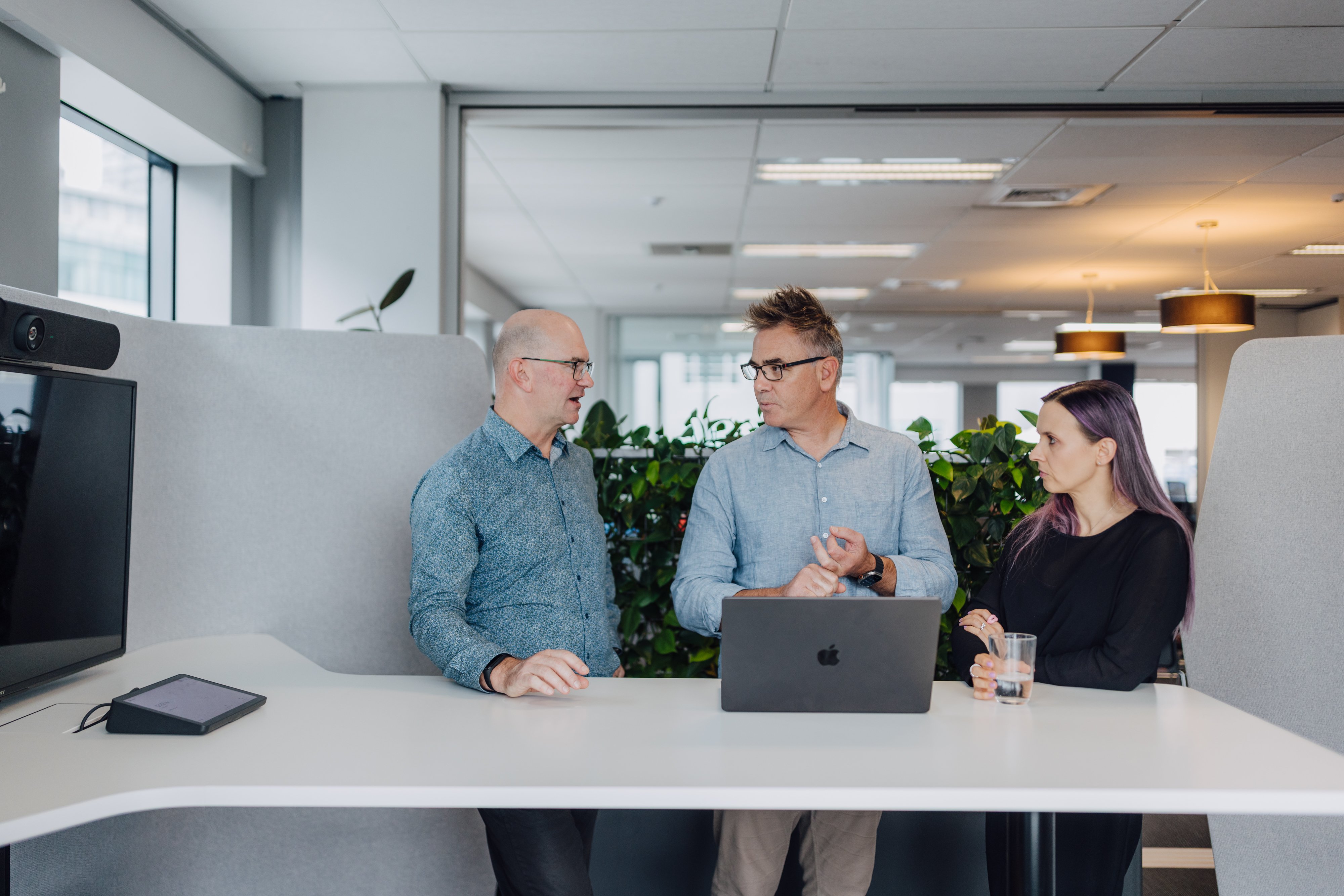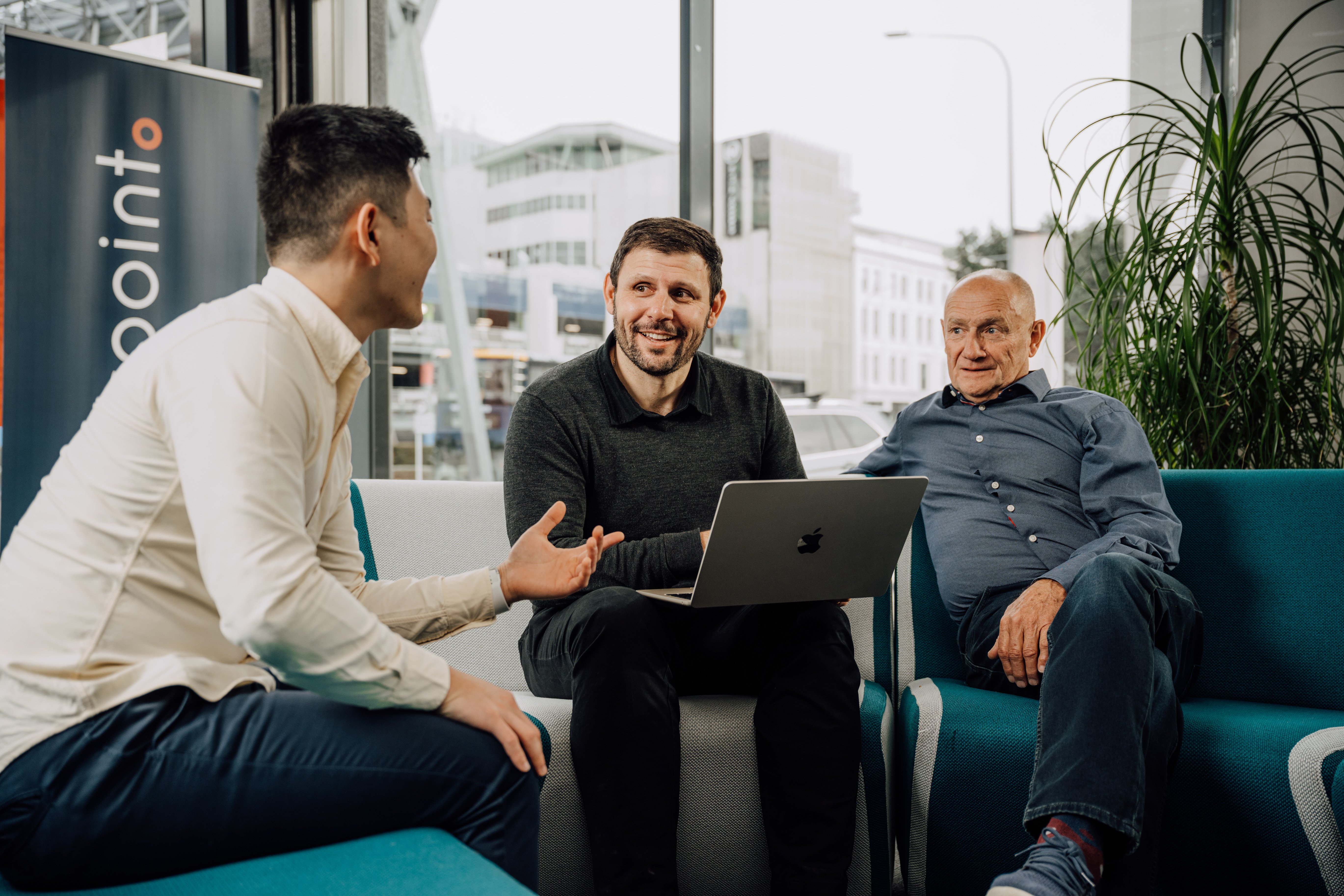Legacy system modernisation has long been a costly and complex challenge. Discover how Generative AI tools are fundamentally changing the economics and speed of modernisation, making it achievable for more organisations.
Many organisations live with ageing legacy systems – applications often described as "workhorses" that perform critical functions but carry increasing risk. Technical debt accumulates, security vulnerabilities emerge, and the original developers with crucial knowledge may have moved on. Modernising these systems has traditionally been viewed as a daunting, expensive task, often with a business case that's hard to justify. But what if that equation is changing?
Generative AI fundamentally changes the economics of application modernisation, making previously prohibitive projects achievable. Adopting the technology in modernisation projects can make the journey itself faster, cheaper and significantly less risky. Dave Shepherd, GM Software Engineering at ClearPoint, and Jake McInteer, Senior Enterprise Account Executive at MongoDB discuss AI-enabled modernisation in a recent episode of ClearPoint Unlock. We’ve pulled together a snapshot of their discussion below.
The Modernisation Roadblock (and how AI clears it)
Legacy systems often end up in a "technology cul de sac" or suffer from knowledge drain, making them risky to touch. The longer they're left, the bigger the perceived risk and cost to replace or update them.
"Traditionally modernisation has always been hard and quite expensive and the business case for it is really tricky and a lot of the time it just doesn't stack up," Jake explained.
Legacy applications can arise for several reasons. “Sometimes it's legacy because of its age and where the technology's landed,” says Dave. “Sometimes it's written in a still modern language, but the knowledge has disappeared from the company.” This may result in a code base that’s not well documented from a specification or an architecture point of view, leaving teams lacking the in-house skills or confidence to manage or update the application effectively.
"And so they tend to leave it alone," Dave stated. "And the longer you leave it alone, the more it decays and it becomes more legacy. And then it becomes this big, risky, expensive thing you've got to try and replace. So how can you de-risk that and lower the cost?"
This is where AI steps in. Instead of engineers manually tackling tedious tasks like library upgrades, code analysis, documentation, or test case generation, AI tools can automate or significantly assist in these areas. "Using GenAI to solve some of those [problems]... it's relatively simple things that no engineer actually wants to do but need to be done," Jake noted.
While the high-level steps in application modernisation haven't necessarily changed, AI makes the execution within those steps much faster. For example, where understanding undocumented code previously required painstaking manual analysis, organisations can now ingest the legacy code base into an AI model to help write documentation or specifications.
It's also possible to query the code using a secure chat environment, explains Dave. Asking questions like 'What is this class doing?' – almost as if talking to the original architects, retrieving valuable information directly from the source code using these advanced tools. (Crucially, this process uses secure, private AI capabilities, ensuring proprietary code remains confidential and is explicitly not used for training public models.)
"Once customers see it working... often showing the engineers, the lead engineers, how those tools can work, and they go, ‘Oh, that would be fantastic,’” Dave explained.
The impact can be transformative. "What we're seeing more and more these days with customers is bringing generative AI into that modernisation process lowers the cost and accelerates the outcomes massively," said Jake. "All of a sudden the economics for those modernisation activities stack up, the business cases are getting approved".
For a more comprehensive look at how modern AI tooling can accelerate different modernisation approaches, download our latest app modernisation guide.
Case Study: Modernisation Accelerated by 90%
A compelling example discussed was MongoDB's work with Bendigo and Adelaide Bank in Australia. Facing challenges modernising older but critical systems, they partnered on a pilot project using generative AI. The goal was not only to modernise a specific application (their agent teller app) but also to build a reusable "factory" for tackling other legacy systems.
Because Bendigo had already estimated the traditional cost and timeline, the results were measurable. "Using generative AI actually accelerated the process by 90%," Jake revealed. "It meant that they could do the modernisation for that first application at one tenth of the cost of what they were expecting". This success paved the way for modernising further applications within the bank.
Modern Architecture for future flexibility
Modernisation itself can take different forms, as Dave Shepard highlighted. Sometimes it involves a major shift – moving off a dying language or legacy stack entirely, perhaps rewriting for cloud-native architectures using containers or serverless tools. Other times, the core technology stack might still be suitable but requires significant updates to outdated frameworks and libraries – a task AI can also significantly assist with.
In some instances, the project goal includes adopting a more modern architecture alongside application changes. While not always required to benefit from AI assistance during the modernisation steps, this can enhance the resulting application's flexibility and future AI-readiness.
In Bendigo's case, this meant moving from a monolithic application on a traditional relational database to a microservices architecture using MongoDB. “ That was important,” says Jake, “because being able to expose essentially APIs, rather than just monolithic applications, function calls, meant that Bendigo is now able to integrate that across other systems more easily as well. So there's more value unlocked than just the clearing up of the risk of the prior app as well.”
Why was this important?
- Fit for Purpose: "Relational database models aren’t necessarily the best fit for microservice type architectures and modern development," Jake stated. Document-oriented databases like MongoDB often align better.
- Flexibility & Extensibility: On top of replacing old tech, Modernisation helps build for the future. Modern data platforms allow easier evolution as requirements change, crucial when embedding AI features. "You're constantly wanting to add new features and give the model more information... So that extensibility is key,” Jake noted.
- Reduced Cognitive Load: Modern platforms can often handle diverse data types needed for AI (vectors, text, geospatial) within a unified system. This avoids cobbling together multiple niche tools, which increases complexity and the cognitive load on engineering teams. MongoDB, for example, allows storing vector embeddings directly alongside the source data, simplifying updates for real-time AI. "Having that live in the database was pretty cool and compelling," Dave remarked.
Getting Started Safely and Flexibly
Knowing where to begin with AI-enabled modernisation can be challenging. The starting point can vary, notes Dave – sometimes it involves convincing technical teams of feasibility, other times it's about demonstrating the strategic value to C-level executives. Often, organisations know they need to modernise, but are unsure how to take the first step and leverage AI in the process.
Part of this uncertainty stems from the fact that while getting started with generative AI tools might seem straightforward due to their language interfaces, applying them effectively and safely to specific modernisation problems is complex. There is also risk of organisations ‘ buying into some nirvana’ where they employ a gen AI agent, give it access to their codebases and things happen. ”It's risky from a will it work or not and it's also risky from where is your code going?” says Dave. Being able to modernise safely, keeping code confidential within a cloud tenant or even on-prem, is key.
"Working out how to use these tools in a really specific way is hard," Jake noted. This is where partnering with experienced organisations like ClearPoint or MongoDB becomes valuable. An experienced partner provides a "big head start" by understanding specific prompts, techniques, and secure implementation patterns.
Starting with a tightly scoped pilot project is often the best approach. ”Most big enterprise organisations have these older systems, they have risks and challenges,” said Jake. “Pick one off, find a partner that's done some of these things before, solve that problem and then take those learnings into the next one.”
Given the pace of change where 'every week it feels like there's something massive that changes', working in ways that don't lock you into specific cloud providers, LLMs, or other technologies is important for future adaptability.
The Time to Modernise is Now
Generative AI has fundamentally shifted the feasibility of tackling legacy systems. By dramatically lowering the cost and time involved, it opens the door for organisations to finally address technical debt, reduce risk, and build a foundation for future innovation.
If you're looking at legacy systems and wondering how to move forward, AI-enabled modernisation makes the previously daunting achievable. Partner with ClearPoint to navigate the process safely and effectively.



